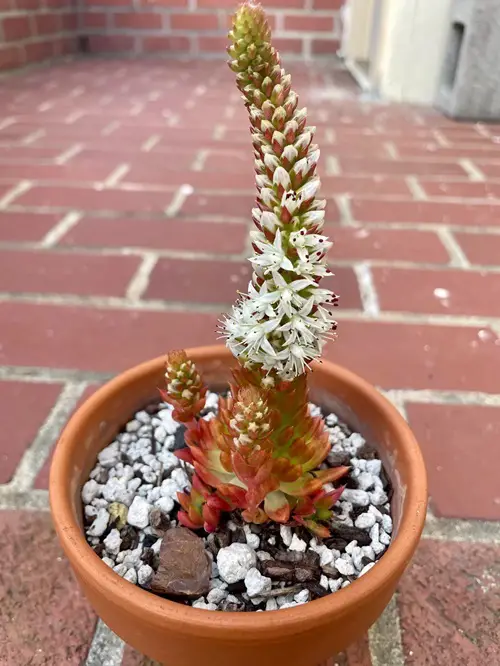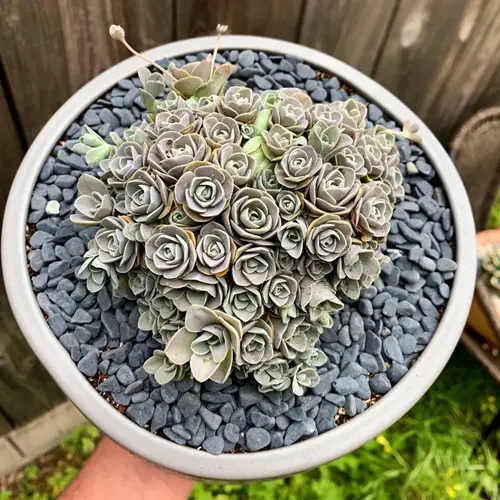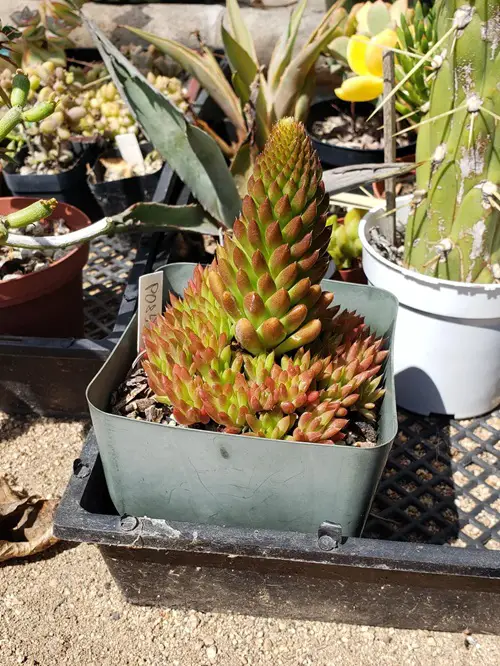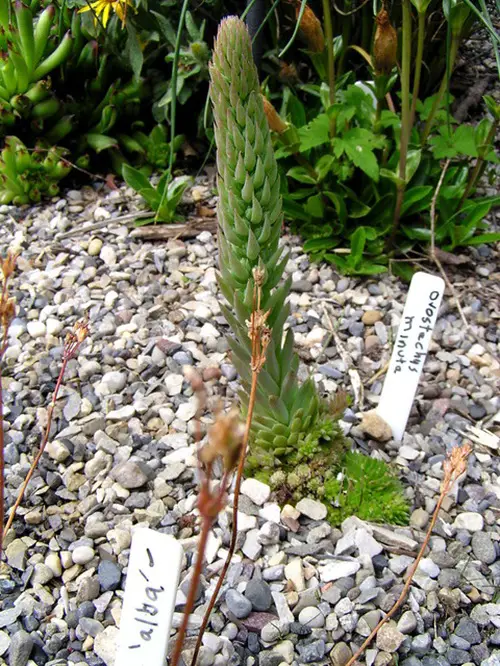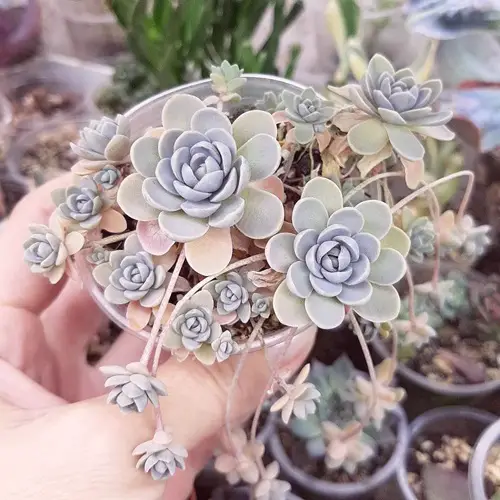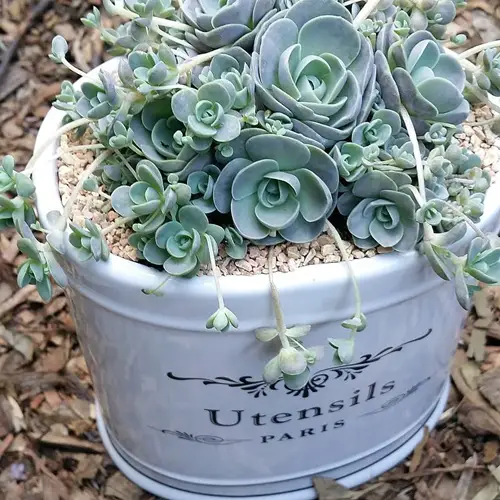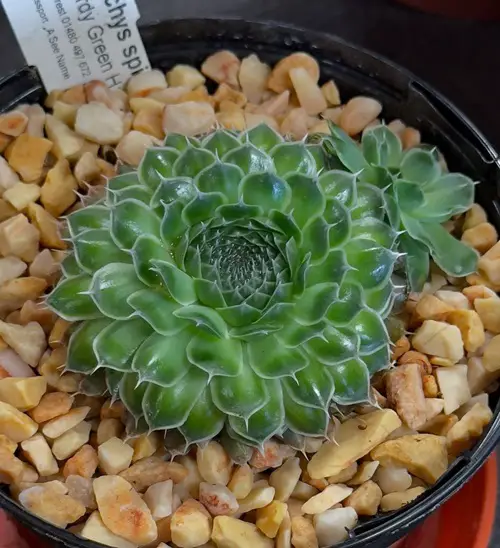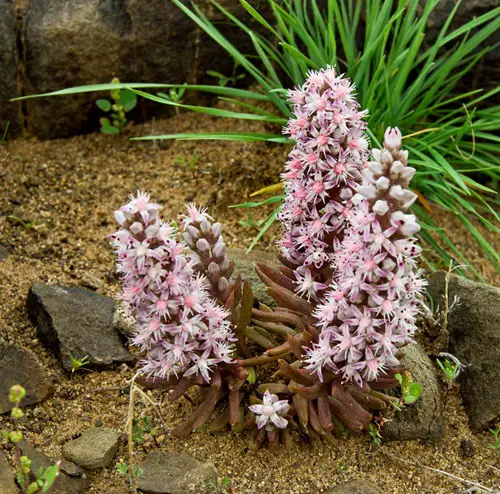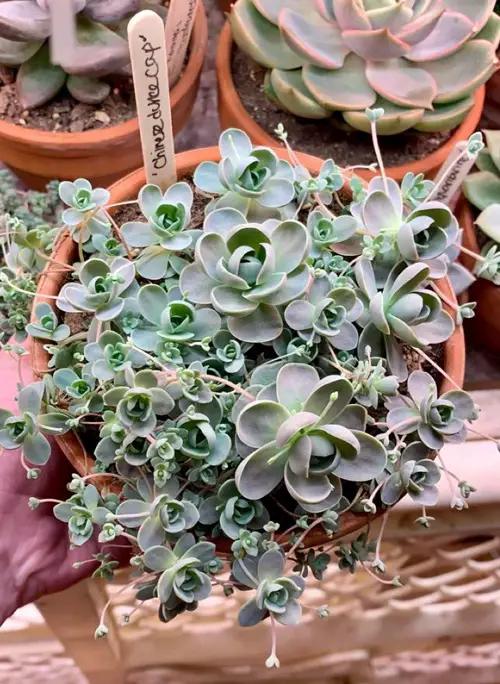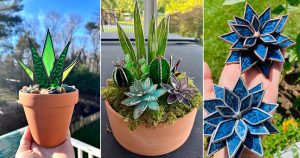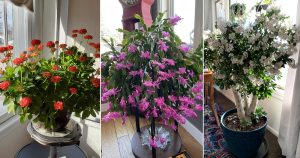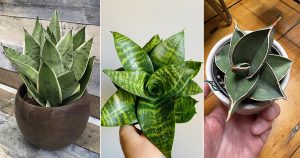If you love roses but also want some easy-caring plants? Then, here we listed some beautiful Types of Orostachys Succulents just for you!
Orostachys varieties straight from China are famous for their striking rosettes and minimal care needs. They are perfect for rock gardens and easy to grow indoors and out.
1. Orostachys aggregata
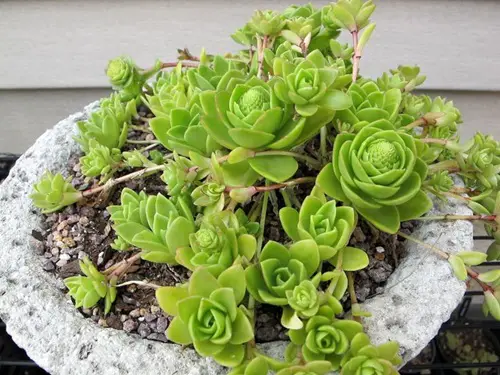
Orostachys Aggregata form a tidy, low-growing rosette with cool, grayish-green leaves. This little beauty slowly spreads up to about 12 inches wide and 4 inches tall. Come late summer, it surprises with slender spikes of soft yellow flowers that rise like mini fireworks. As temperatures cool in fall, you might notice a hint of purple creeping into its leaves—a lovely color twist caused by the chill.
This variety craves full sun and gritty soil, so mix in sand or perlite to improve drainage. A little sunlight and a lot of dryness keep it thriving!
2. Orostachys Cartilaginea
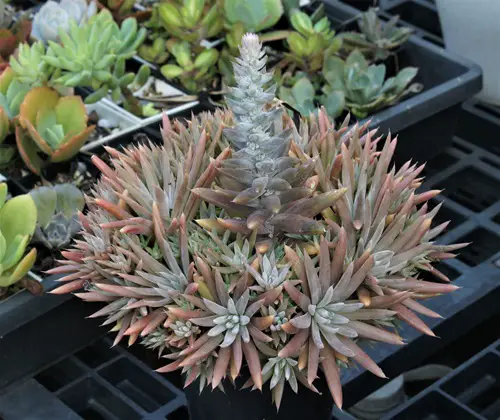
A natural from China, Orostachys Cartilaginea is an evergreen succulent that has gray-green leaves that form tight rosettes. During the summer, it blooms with small yellow star-like flowers, which will be a double bonus for your garden!
Additionally, with its low-maintenance and hardy nature, this is the perfect plant for gardeners who appreciate simplicity and resilience. Orostachys Cartilaginea can withstand temperatures as low as -10°C, making it a reliable choice for colder climates.
3. Orostachys Chanetii
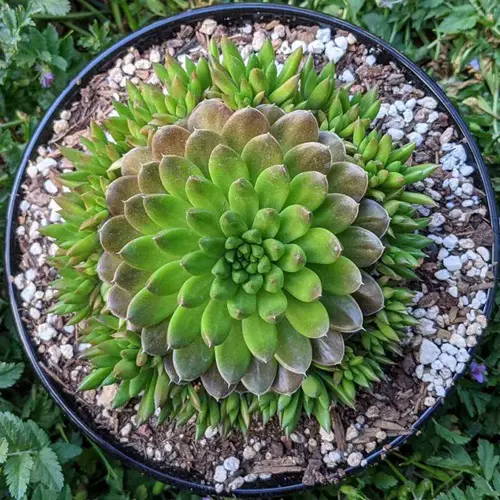
Orostachys chanetii starts with a quirky, finger-like look as it forms small, loose rosettes of narrow, gray-green leaves that often have a reddish tint along with cheerful yellow blooms in summer. Each leaf is slender and cylindrical, ending with a tiny spine, and the whole rosette reaches around 2 inches across. As it matures, the plant takes on a fuller, rose-like shape.
In winter, it really shows off with clusters of small pinkish or white flowers that bloom densely in a pyramid-like formation, stretching up to 12 inches tall. This little succulent truly transforms from quirky to charming as it grows!
4. Orostachys Fimbriata (Dunce Cap)
A fun one for the garden, Orostachys Fimbriata, or Dunce Cap, has triangular green leaves that stack up to form a spiky cone. In late summer, it blooms with an impressive spike of white flowers, resembling a snowy explosion!
Moreover, this plant loves gritty soil, so mix in sand or perlite for the best drainage and long-lasting health.
5. Orostachys Iwarenge (Chinese Dunce Cap)
This is a popular monocarpic variety, which means it only blooms once before the main rosette dies. It’s known for chalky-gray rosettes that produce whimsical, cone-shaped spikes of pink flowers. Fortunately, it leaves plenty of babies behind, so the cycle continues.
Orostachys Iwarenge is perfect for cold climates, it’s lovely in rock crevices or containers where it can self-seed and expand over time.
6. Orostachys Japonica (Rock Pine)
This East Asian native is like the old soul of the succulent world, quietly growing in rosettes with soft green leaves and sending up tiny white flowers every couple of years. It thrives in rocky settings, blending beautifully with alpine and mountain-inspired gardens.
A cool-weather lover, this succulent almost wears its ruggedness on its sleeve and loves mimicking mountainous terrain.
7. Orostachys Malacophylla
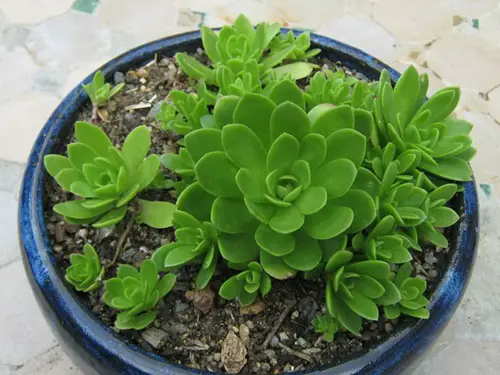
Yes, Orostachys malacophylla and aggregata one are indeed the same plant species, just with slight differences! Taxonomists see them as different varieties. Orostachys Malacophylla forms a dense carpet of green rosettes that bloom like mini-volcanoes in summer, bursting into clusters of tiny flowers. This variety is quite similar to Orostachys Aggregata but forms a dense clump and has slightly red-tinted stolons.
Great for well-draining soil and full sun, it’s one of the hardier types that can manage cooler temperatures.
8. Orostachys Minuta
This mini succulent packs a big punch with its tiny blue-green rosettes and a hint of blush under sunlight. The tall yellow flower spikes look impressive against other plants, so it’s perfect for adding a bit of pizzazz to small spaces.
Orostachys Minuta is perfect for succulent bowls, rock gardens, or filling out little nooks where it can shine like a hidden gem.
9. Orostachys Paradoxa
Straight from Russia’s Far East, Orostachys Paradoxa may have a paradox in its name, but there’s nothing confusing about its appeal. It is popular for its fleshy, ovate leaves, which often have a hint of purple.
Instead of the usual tight rosettes, its flowering stems have unique, opposite leaves that give it a wild look. Sitting somewhere between Orostachys and Hylotelephium, it’s the perfect rule breaker for any gardener.
10. Orostachys Sikokiana (Chinese Dunce Cap)
A winner for container gardens, Orostachys Sikokiana forms rosette clusters that look right at home on a sunny balcony or patio. Just ensure excellent drainage, and watch it flourish. This one is all about low-maintenance beauty.
Originally from Korea and Japan, Orostachys Sikokiana surprised botanists when it was found high up on China’s Mount Omei. Considered a relict plant—meaning it’s an ancient survivor!
11. Orostachys Spinosa
One of the most cold-resistant varieties, Orostachys Spinosa can survive down to a staggering -40°C. Its rosettes follow a mesmerizing Fibonacci sequence, and they can even photosynthesize under snow cover. Now that’s resilience!
This hardy succulent from Russia and Korea thrives in subalpine regions, creating charming gray-green rosettes up to 10 cm across. It’s hardy enough to handle snow, so if you live in a cold climate, this succulent is your perfect, no-fuss choice.
12. Orostachys Thyrsiflora
Look at this beauty! An eye-catching variety, Orostachys Thyrsiflora has a distinct celadon color and rosettes with unique, spiky foliage. It’s one of the more dramatic-looking types, bringing an almost porcelain-like sheen to the garden.
In addition, place it in a sunny, dry spot with well-draining soil, and it will thrive with minimal watering.
13. Orostachys Boehmeri
Famous for its soft blue-green leaves that can blush pink under sunlight, this tight rosette succulent is a bit like nature’s confetti. It works beautifully in containers or rocky gardens where it forms a subtle, soothing mat of green.
Full sun and gritty soil make this variety feel right at home. Just give it space, and watch it spread gracefully.
If you are in love with roses you must try some types of Orostachys for your garden. So, which one of them you picked? Let us know your favorites in the comments below!

